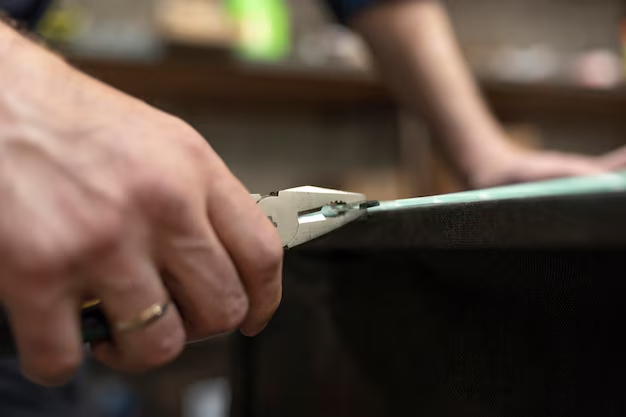Is It Safe to Leave a Refrigerator Unplugged for a Year? Here's What You Need to Know
Have you ever found yourself wondering whether you can simply unplug your refrigerator and leave it idle for an extended period, such as a year? It's a question that surfaces often, especially when planning long travels, handling property rental arrangements, or even during major home renovations. While it might seem straightforward to just unplug it and go, the implications and requirements for ensuring everything is taken care of are more complex. Understanding these factors is crucial in making a well-informed decision. Here’s everything you need to know about disconnecting your fridge for a long time and the considerations that come with it.
The Basics of Unplugging Your Refrigerator
What Happens When You Unplug a Refrigerator?
Unplugging a refrigerator stops its cooling system, meaning it no longer maintains a cold environment for perishable food items. This also implies no energy is consumed, which can save you on electricity bills. However, leaving a refrigerator unplugged for long periods involves more than just flipping the switch.
The Effects of Unplugging on the Fridge
When a refrigerator is unplugged, its internal environment becomes susceptible to mold growth, rust formation, and even unpleasant odors due to lingering moisture. Moreover, components such as compressors and motors might face operational issues when restarted after a prolonged hiatus. Ensuring the appliance stays functional and clean requires specific preparatory measures.
Practical Steps Before Unplugging
Cleaning and Defrosting
Before you unplug, clean the interior thoroughly to prevent smells and bacteria proliferation. This involves removing all food items and cleaning shelves, compartments, and drip trays with a mild detergent. If you have a freezer integrated, allow time for complete defrosting. Leaving the doors slightly ajar will aid circulation and deter mold buildup.
Dry It Out
Ensure that the fridge is completely dry. Leaving any moisture inside can become a breeding ground for unwanted microorganisms. Use towels or absorbent cloths to wipe every surface, and leaving a small container of baking soda inside can further help to absorb any remaining moisture and odor.
Ensuring Safe Storage for Long Periods
Choose the Right Storage Space
If the refrigerator will be stored, choose a location that is dry and temperature-controlled. Damp conditions can accelerate rust and mold. An ideal spot is one with minimal temperature variance and steady conditions.
Protect the External Surfaces
Utilize protective covers to shield the exterior accurately. A breathable, fitted cover works best to avoid dust and accidental damage, while still preventing any trapped moisture from building up.
Consider Safety Precautions
Ensure the appliance is not a tripping hazard by securing it safely in its designated spot. If you’re covering it, make sure cords and cables are contained properly, reducing the risk of injury or damage.
Restarting Your Refrigerator After a Long Unplug
Inspecting Before Plugging In
When it’s time to plug the fridge back in, a preliminary inspection is crucial. Check for visible signs of damage such as rust or cracked seals. Ensure that the plug and outlet are in good working condition to avoid electrical issues.
Gradually Restocking
Avoid overloading the fridge immediately after it’s been powered on. Allow it to reach the appropriate internal temperature first. Gradually add food to prevent stressing the cooling mechanisms.
Common Concerns and Solutions
What About the Smell?
If, despite precautions, you encounter an unpleasant smell, try using activated charcoal or coffee grounds to neutralize odors. This transition may take some time but is effective.
Mold or Mildew Formation
In the event mold or mildew develops, treat it using a solution of vinegar and water, which helps eliminate spores. Persistent problems might require professional cleaning to ensure all hazards are removed.
Environmental and Energy Considerations
Energy Savings
Leaving a refrigerator unplugged saves on energy bills, a key motivator for many considering this option. Reflect on your household’s energy usage and costs when contemplating storage durations.
Disposal Alternatives
If extended unplugging seems too tedious, consider donating or recycling the fridge. This route not only prevents resource wastage but can also aid others in need of the appliance.
📝 Quick Summary Checklist
- Clean and Defrost: Thoroughly clean and completely defrost to prevent mold and odors.
- Keep Doors Ajar: Prevent mold by allowing air circulation inside.
- Select Dry Storage: Choose dry, stable temperature storage to avoid rust.
- Use Protective Covers: Protect external surfaces during storage.
- Inspect Before Use: Check for damage before restarting.
In conclusion, while leaving a refrigerator unplugged for a extended period is possible, it comes with essential preparatory and maintenance steps to prevent future issues. Ultimately, balancing these considerations with your specific needs will guide you to the most appropriate solution. Keep these insights in mind when planning your next move, and make sure your fridge remains in prime working condition for years to come.
